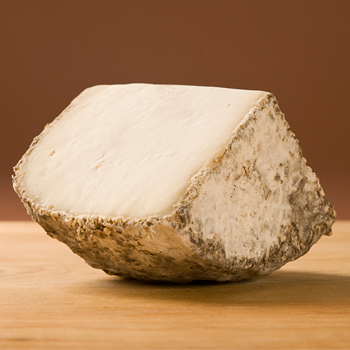by Hannah Howard
The world more than blossoms in summertime; just look out your window. To quote the line that inspired the summer chapter title of Cooking with the Muse, “To see the summer sky,” said Dickinson, “is poetry.” New York is at the height of its glory — window boxes full of rainbow-colored flowers, Sheep’s Meadow full of flip-flop wearers and sun worshippers, rooftop bars, Brooklyn Bridge walkers, a hop in everyone’s step, and definitely in mine.
Did you know that Sheep’s Meadow was once teeming with pastured sheep and goats? Now one has to take a road trip upstate or elsewhere in this country to get a taste of that bucolic homeland. Out in the cheese-making universe, the pastures burst into their most verdant splendor. Farm animals graze upon a buffet of lush grasses, fragrant herbs and wildflowers. Happy goats and the freshest grass and herbs make for spectacular cheeses. While many farmers milk their herd year-round, dairy goats breed and freshen more seasonally than cows. Come summer, they’re producing gorgeous milk. And great milk means great cheese.
Those hearty, bold cheeses that age for months will be waiting for you in autumn. Summer is the season for—among other things—young, fresh goat goodness. Celebrate by feasting. From France we get the fromages de chevre: Petit Billy, Rond Cendre, St.-Maure, Crottin de Chavignol, Valencay, and other beauties. All of these diminutive cheeses are bright, pristine white (unless ashed black, for a dramatic coat), sweet, moist, and tender — as are the fresh chevres from New York State’s Coach Farm, the Spanish Murcia Naked Goat and Drunken Goat, Leon’s Canacabra, and a host of lovely summertime picks. Here are a few marvelous cheeses that can be inseparable from partaking in the earth’s wildly abundant season:
Queso Clara
A firm, yet tender handmade raw goat’s milk cheese (90-days aged), rustic and primitive. It’s made by a young couple not far from Salamanca in Leon, and has a wonderful depth that only comes from raw milk. Traditionally, it can be served with fare as simple as marcona almonds and crusty bread. But I must say that it goes even better with the “Turkish Cherry Tomato Salad with Pomegranate Molasses Dressing” from the Summer chapter of Cooking with the Muse.
Pico
A creamy, dainty button of chevre from Perigord, Pico oozes under its thin, wrinkly, edible rind while maintaining a firm, cake-y, lactic center — minerally, fresh, but also oh so rich and buttery. Serve with Champagne, or on a salad of tender greens—the “Salad of a Thousand Leaves” from the Summer chapter would be wonderful—and your favorite summer veggies.
Maure de Touraine A.O.C
A village south of Tours gave its name to the classic chevre baton with a length of straw stuck down the center to hold the cheese together as it ripens. This is one of the great fromages de chevre, full of balanced tang and lemony sweetness. Serve on crostini with a drizzle of honey for an elegant appetizer or with “Portobello Mushrooms Stuffed with Chestnuts, Apples, and Wild Rice” from the Autumn chapter of Cooking with the Muse.
Humboldt Fog
Created by Mary Keens at Cypress Grove Chevre in McKinleyville, California, Humboldt Fog is poetically named after the thick fog that encases Humboldt County’s each morning. It’s an American original — Mary Keens started crafting goat cheeses in the 1980s — and helped lead the American artisanal cheese-making revolution. The fog rolls in on a gorgeous wheel of goat’s milk cheese with a clean, bright, lactic taste that becomes earthier and mustier with age. Cut open the pillow-y, bloomy rind to find bright white, smooth paste, bisected with a thin line of black vegetable ash. So pretty and festive! It’s a suitable alternative to the feta in the “Jewel Box of Summer Salad” in the Summer chapter.
Brunet
This fluffy, silky, soft-ripened goat’s milk cheese from the little Piedmontese village of Bosia is as luscious as whipped cream. If you’re game for a cheese fest, definitely eat the whole thing, rind and all. Brunet tastes like mushrooms, yeast, and sweet, sweet cream. It’s therefore perfect for topping off the “Lentil-Salad Stuffed Peppers” in the Summer chapter. Or it can be served with sweet beets and an un-oaked chardonnay. Tear off a hunk of baguette and smear a generous helping of Brunet… life is good.
